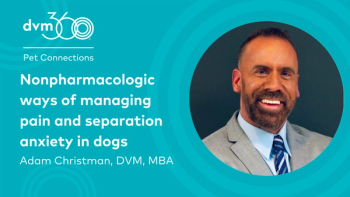
Working through key transitions
Taking the next big step in practice? Whether you're adding a doctor to the team, making the jump to partner, or taking on a remodeling or building project, we've got the right advice.
Although you may feel alone when you tackle big practice hurdles, you're likely in good company. According to a Veterinary Economics June 2004 Issue Feedback Study, 39 percent of you plan to add a practitioner to handle growth in the next five years. And nearly a quarter of respondents say they plan to remodel their facility, make or accept a partnership offer, or build a new facility in the next five years. (See "What Comes Next?")
Some advice is universal
Facing one of these transitions but not sure how to get started? Veterinary Economics Editorial Advisory Board member Dr. Karen Felsted, CPA, MS, CVPM, offers three helpful steps for surviving and thriving during each of these four common practice transitions.
What comes next?
Adding another practitioner
1. "Make sure another doctor is really what you need," says Dr. Felsted. "If you could handle the problem better by hiring more support staff members or by using them more effectively, it could save you time, stress, and money."
2. Make sure you understand the financial ramifications of adding a new doctor, Dr. Felsted says. "Unless you're replacing a doctor who left, the new doctor won't have a readymade set of clients to serve. So you won't be making as much until you grow the practice by a full client load."
3. Lastly, Dr. Felsted recommends that you start searching for your new practitioner early. "It's not an easy task to find the right associate," she continues.
Remodeling the facility
1. "Ask yourself, where does this remodeling project fit into your long-range plan for your practice?" says Dr. Felsted. "For example, if you're wantiplan to stay in your current facility for another 20 years. And you probably don't want to put a lot into remodeling a leasehold if you plan to leave, because yong to move into a different facility in five to 10 years, you're probably going to spend much less than if you u won't be able to get much out of it. Think long-term."
2. Hire people who know what they're doing. "Your contractor, architect, and other advisors must understand the veterinary business and your workflow issues to give you what you need in your remodel," says Dr. Felsted.
3. Just knowing how much the remodel will cost you isn't enough. Dr. Felsted says you also need to know where the money to pay for your construction costs is coming from. For example, how will you increase revenue to pay for the remodel, or will the cost come out of your current profits?
Making or accepting a partnership offer
1. "You must spend quality time working together before jumping into a partnership," says Dr. Felsted. "I think you need to work in the same facility together for at least a year. This time gives you a jump-start to a better working relationship."
2. If one of you sees your future practice together as a six-doctor operation in a Taj Mahal and the other is content as you are, your future's in trouble, Dr. Felsted says. "Talk about both of your visions for the future and about how you want the practice to grow," she says. "Make sure you share compatible goals and expectations."
3. "Hiring good advisors, such as attorneys and accountants, will help you understand the financial implications of a partnership," says Dr. Felsted. "Good help at this stage will save you problems and stress down the road."
Building a new facility
1. "Before you do anything else, do a cash-flow projection and make sure you understand the finances involved in building a new facility," advises Dr. Felsted. "Building can drain your cash up-front, so you need to know where you'll be able to find the money to pay for your dream facility."
2. Again, hiring good advisors—in this case, architects and contractors—is essential. "You need to hire people with some veterinary experience who understand your workflow and material needs," she says. "Check out buildings your potential architects have built, talk to people they've worked with, and make sure former clients still feel happy with their clinic 10 years down the road."
3. Be prepared for anything! "Building a practice takes lots of time," she says. "And the road's full of bumps. It helps to know what you're getting into."
Newsletter
From exam room tips to practice management insights, get trusted veterinary news delivered straight to your inbox—subscribe to dvm360.




